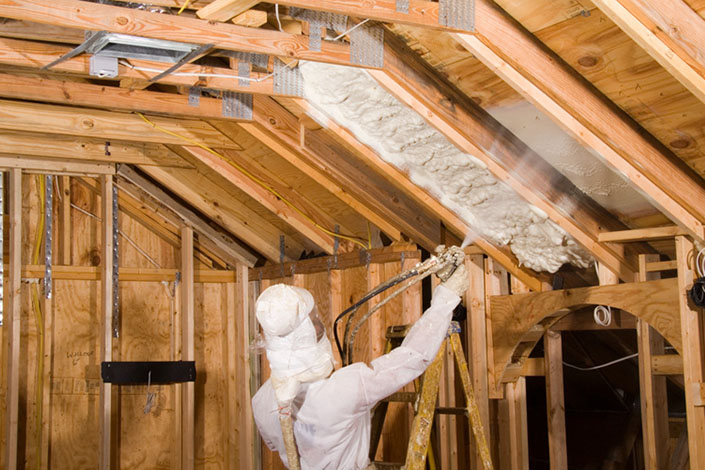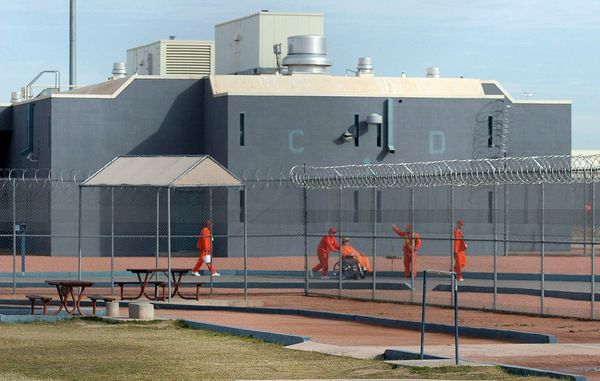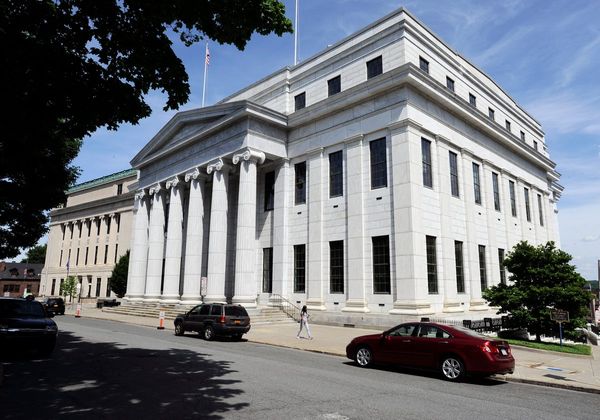
* Growth in CFC-11 emissions from eastern China accounted for 40% to 60% of the total global growth, scientific journal Nature reported last month
* China’s environmental ministry has questions about the research and expects scientists will conduct more in-depth and comprehensive research on the emissions
(Beijing) — One year ago, an article published in the respected British scientific journal Nature dropped a bomb on the environmental community: emissions from an ozone-depleting substance called CFC-11 — a chemical that has been banned for nearly a decade — had mysteriously risen a whopping 25% since 2012.
The substance, which is also called trichlorofluoromethane but is better known by the brand name Freon, is a chlorofluorocarbon (CFC) that can be used as a refrigerant or as a “blowing agent” to help polyurethane foam expand.
So damaging is CFC-11 to the layer of Earth’s stratosphere that shields us from the sun’s ultraviolet radiation that producing it is against international law. In 1991, the Chinese government signed the Montreal Protocol, which was established in 1987 and bound signatories to phase out their production of the substance by 2010.
Investigations followed, culminating in a paper published in the same journal last month that blamed one country: China, which has the largest polyurethane foam market in the world, accounting for about 40% of total global consumption.
The 2018 Nature paper found the amount of CFC-11 in Earth’s atmosphere had increased by an average of 13,000 tons each year since 2012. Subsequent research over the past year has found eastern China accounted for about half of the increase, indicating that the region was emitting thousands of tons of CFC-11 per year.
While few experts challenge the findings, the Chinese government continues to dispute them. Liu Youbin, a spokesman for the Ministry of Ecology and Environment (MEE), said at a press conference in late May that “previous (government) investigations … have not found the large-scale illegal use of CFC-11 as a foaming agent. The China Polyurethane Industry Association does not support the conclusion of the article.”
The researchers stood by their findings in interviews with Caixin, arguing that such large-scale emissions of CFC-11 are most likely to have come from production activities. While public government data accepts the existence of underground production and use, China still claims illegal CFC-11 production could not have reached the volume of emissions determined by the international researchers.
The research
The lead author of the May 2018 report, Stephen A. Montzka, was shocked to discover the rise in CFC-11 emissions. “I have been engaged in relevant research for nearly 30 years, and this has been the most surprising discovery. I was shocked by the result,” said Montzka, a scientist at the U.S. National Oceanic and Atmospheric Administration (NOAA). He collaborated with scientists from the Netherlands and the U.K. for the report.
Since the Montreal Protocol, global CFC-11 emissions had shown a steady downward curve from a peak in 1993. The United Nations Environment Programme (UNEP) had estimated that the ozone layer would return to normal by the middle of this century.
The 2018 paper thus drew international attention. Joseph DiGangi, a senior adviser at the International Persistent Organic Pollutants Elimination Network (IPEN), told Caixin at the time, “This study is very important. The production of CFC-11 is a violation of international law, and the Montreal Protocol has been described as one of the most successful international environmental conventions.”
Montzka estimates the acceleration in use could seriously undermine the protocol and set ozone repair back by nearly a decade.
Durwood Zaelke, founder and President of the Institute for Governance & Sustainable Development and an expert on the Montreal Protocol, said after the publication of the 2018 paper: “Somebody’s cheating. These are not accidental emissions, CFC-11 production is being carried out in secret.”
The Environmental Investigation Agency (EIA), an international nongovernmental organization, quickly began researching and investigating after the release of the May 2018 paper, the organization’s climate lead Avipsa Mahapatra told Caixin. Mahapatra was the lead author of a report on CFC-11 in China the organization released two months later. It fingered small and midsize underground factories in China as the source of the emissions.
Using online business platforms, the EIA contacted 25 Chinese manufacturers of rigid polyurethane foam and polyurethane raw materials suppliers (CFC-11 can also be used as a raw material for polyurethane). Of the 21 companies from 10 provinces and cities that responded, 18 admitted that they were using CFC-11 to produce their materials.
“Within a month, by June, we already had a list of a few companies in China producing CFC-11 and we shared them first with the government of China,” Mahapatra said.
In interviews with EIA, staff from a thermal insulation factory in Hebei province said they received tips about central environmental protection investigations. “Our workers pile up all the materials and hide them,” EIA was told. Staff from the Hebei factory and other factories found to be using CFC-11 told EIA the chemical was cheaper and more efficient than the legal alternatives.
Based a synthesis of data including market information and field research, EIA estimated that the emission scale of CFC-11 in China was between 10,000 and 12,000 tons per year between 2012 and 2017. According to the United Nations, between 2012-2016, China exported 415,000 tons of “other polyether materials” and 128,000 tons of “polyurethane materials.” EIA concluded that there was strong possibility that CFC-11 premixed raw materials were being transported to other states party to the Montreal Protocol.
The EIA published another investigation into global CFC-11 use in November 2018 that tested samples of polyurethane foam from three Chinese companies. All samples contained CFC-11.
On May 22 this year, more damning evidence emerged. Growth in emissions from eastern China, mainly in Shandong and Hebei provinces, accounted for 40% to 60% of the total global growth, last month’s Nature report found. CFC-11 emissions in this region between 2014 and 2017 were about 7,000 tons higher than those in 2008-2012.
The team behind the May 2019 paper used data from Japan’s National Institute for Environmental Studies and the Advanced Global Atmospheric Gases Experiment (AGAGE) and combined four different atmospheric models to track and quantify the emission sources. AGAGE is one of the most advanced and systematic international observational networks for ozone-depleting substances (ODSs) and greenhouse gases that contain fluorine, a component of CFCs.
From the spatial distribution of CFC-11 emissions in eastern China in 2008 to 2012 and 2014 to 2017, the provinces with the greatest changes were Shandong and Hebei. Those changes were evident in all four models. The authors said atmospheric patterns and the limited number of observatories meant that it would be difficult to pinpoint precise emissions sources below the provincial level.
The study concluded that the increase in CFC-11 emissions from eastern China is likely due to production of the banned chemical.
Chinese efforts
Liu Youbin, the MEE spokesman, said after the release of the 2019 report that China had attached particular importance to banning CFC-11 and other chemicals in the Montreal Protocol, and had hosted an international seminar on the implementation of the protocol this March. The authors of the Nature articles were invited, along with experts from international institutions and domestic experts.
The spokesman claimed “some experts” had said “the research methods and accuracy of the article are uncertain.” He added that MEE expects scientists will conduct more in-depth and comprehensive research on the CFC-11 emissions and that the ministry is willing to assist.
Yao Bo, an expert put forward by Liu at the press conference and an associate researcher at the Meteorological Observation Center of the China Meteorological Administration, said he doubted the conclusions of the paper. He told Caixin the estimates could be off by nearly 50%.
In fact, the researchers note in their paper that their estimate of 7,000 tons of emissions from eastern China could be off by 3,000 tons — but the figure could be 3,000 tons higher or lower.
Yao was careful not to dispute the qualifications of the scientists, but said there were too few observation stations measuring CFC-11, and that he doubted the reliability of the models used. “Considering that the authors of the paper are part of several research groups that have done the best in the global regional scale inversion model, it can only be said that the number of existing observation stations and the frequency of observations are far from sufficient, and the results of the inversion model itself are also uncertain.”
A professor at Peking University’s School of Environmental Science and Engineering, Hu Jianxin, also claimed the numbers in the report might be inaccurate. “There are many uncertainties in model inversion calculations, and it’s difficult to verify the data,” he told Caixin. Hu is a member of the Scientific Assessment Committee of the Montreal Protocol.
Matthew Rigby, the lead author of the 2019 study and an atmospheric chemist at the University of Bristol, told Caixin, “Our paper has been peer reviewed by three experts. All the methods we used, by four independent research groups, have been peer reviewed in several publications before. So, there are uncertainties, sure. But we are very confident that there has been a significant increase in emissions from China.”
“We know that there are uncertainties in our methods, and we used various methods to try to quantify those uncertainties,” he said. “We’ve estimated that the emissions increase from eastern China was about 7,000 tons plus or minus around 3,000 tons per year. It would be very difficult to explain the changes in atmospheric concentration that we’ve seen with an emissions increase that was smaller than these values.”
A serious problem
That China could be responsible for as much as 10,000 tons — or even 4,000 tons — of CFC-11 emissions per year is a serious problem.
Those who doubt the figures point to the markets as evidence that China’s emissions couldn’t possibly be so high. “CFC-11 is mainly used in polyurethane products, but not for other uses,” Hu Jianxin said. “Seven thousand tons of emissions per year means that the illegal use of Freon may reach tens of thousands of tons… The market for polyurethane is only so big. Who uses so much illegal CFC-11? Where is it used?”
The release of CFC-11 is a slow process, and producing 10 tons of products from it creates one ton of emissions. So if 7,000 tons of new emissions are added annually, it means that the annual average usage is about 70,000 tons. China’s annual production quota of HCFC-141b, the legal alternative to CFC-11, is just over 60,000 tons.
Some experts interviewed by Caixin guessed that underground factories were producing the chemical illegally, or that it was being released as a by-product of other processes. Others believed that the source could be scrap refrigerators from various countries that are shipped to China for demolition, or the destruction of old buildings with insulation in their walls. Many were dubious that any of these sources would amount to 7,000 tons.
That comes despite local environmental inspection teams finding earlier this decade that one Shandong company had produced more than 1,000 tons of CFC-11 in less than a year.
Rigby told Caixin that the researchers had considered building demolitions as a possible source. “But we felt that wasn’t a particularly plausible explanation,” he said. “This is because the magnitude of the rise that has previously been predicted to occur globally over a period of around 20 years was smaller than the rise that we’ve seen for eastern China over the last four or five years. It may be contributing, but we think that it’s just too small a signal to account for the full rise that we’ve seen.”
Underground industry
The Chinese government may well reject the conclusions of international researchers but it is true that underground factories around the country have illegally produced chemicals that were banned more than a decade ago.
A report submitted by the Chinese government to UNEP just last month said MEE has been active in trying to prevent the illegal production and use of ozone-depleting substances (ODS), including CFC-11.
Between 2010 and the first half of 2018, they count 14 cases of the illegal production of CFC-11, and the ministry said 84 tons of illegal CFC-11 destroyed. The government has dismantled illegal CFC-11 production facilities and punished companies that use it. In August, MEE inspections resulted in the seizure of 177.6 tons of raw materials and 129.9 tons of illegally-produced CFC-11. The chemical was found in batches of materials in only 10 out of the 1,172 enterprises searched, the ministry said.
But local environmental inspection teams have also discovered illegal production of CFC-11 over the years, such as in Liaoning and Shandong provinces. In Shandong in 2015, a single company was found to be responsible for the illegal production of 1,102 tons of CFC-11 between November 2011 and October 2012. In other words, in less than one year, just one company was found to have produced a seventh of the annual amount China is alleged to have pumped into the atmosphere.
The government report submitted to UNEP also pointed out obstacles to combating ODS violations, such as underground factories illegally producing the substances, their simple and relatively low cost of production, and convenient use of e-commerce platforms to sell them.
One industry insider told Caixin that CFC-11 is cheaper than the legal alternatives. A central government-led crackdown on CFC-11 pushed prices up briefly, but they have since fallen. The insider said that “it is difficult to estimate the output because they are all underground factories.”
A 2017 article published in Chinese journal Polyurethane Industry by Shao Changying, the head of compliance at the Shandong Provincial Environmental Protection Office, found Shandong had a large number of enterprises that had illegally purchased or used CFC-11. The article cited cheap production and low risk of punishment as reasons for the proliferation.
Meng agreed. Underground plants to make CFC-11 are relatively simple and easy to conceal, he said, “so it’s not easy to crack down.”
Contact reporter Ren Qiuyu (qiuyuren@caixin.com)







